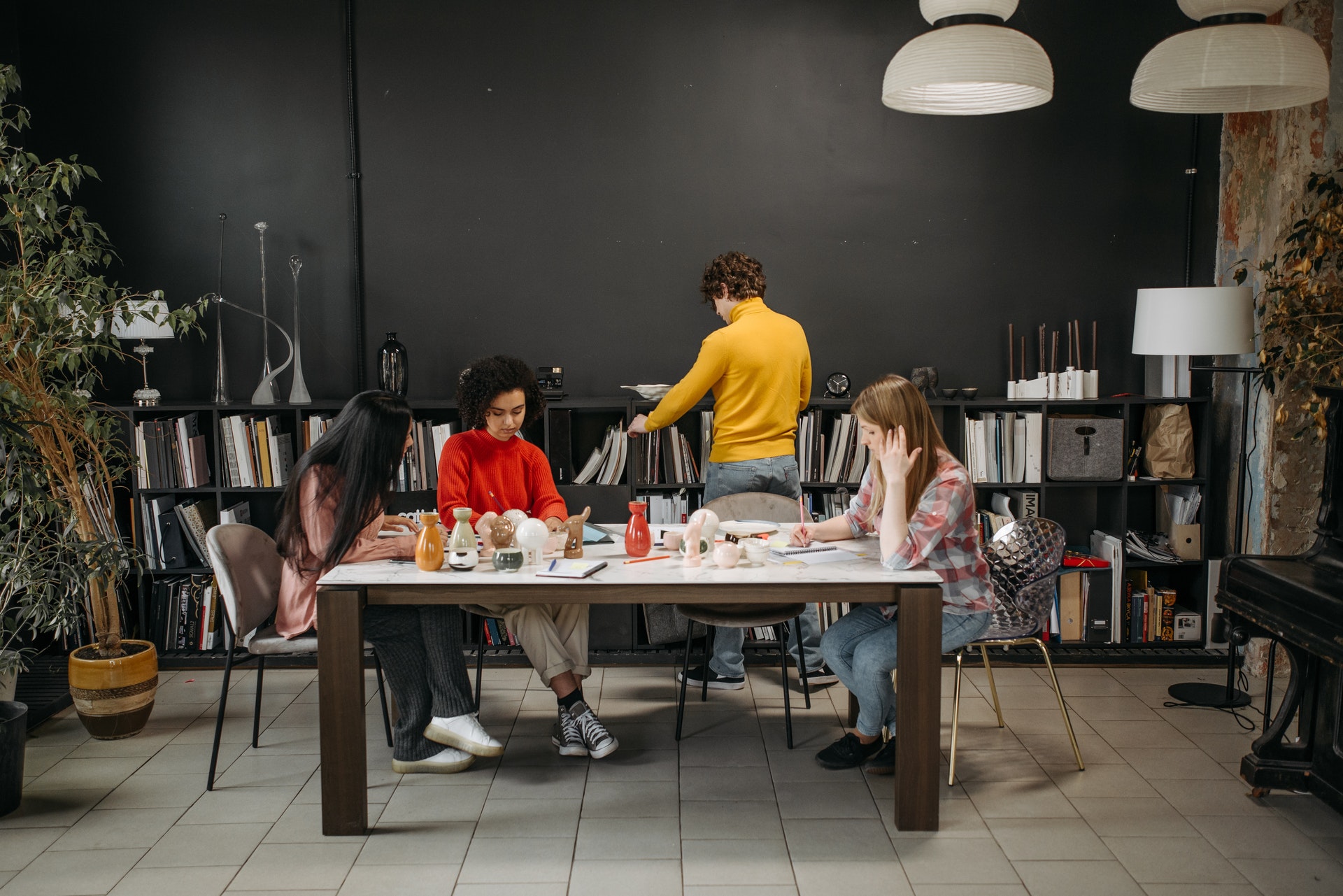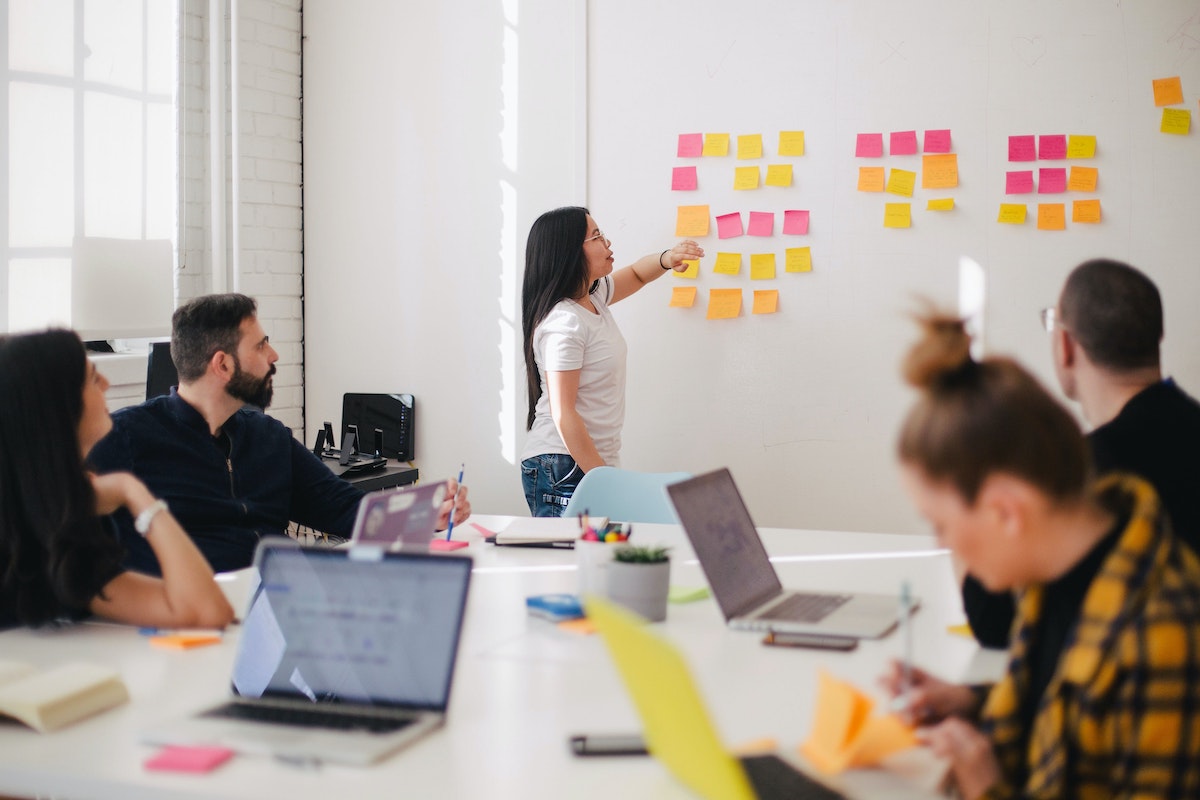
Interior design as a profession is in the midst of immense change, because human needs and the world itself have transformed. And these transformations could be the catalyst for reorienting the industry to focus more on the end user.
As Jim Williamson, a principal at Gensler, puts it, “Interior designers have the opportunity to be the integrators for designing the future human experience.” After all, the quality of the human experience — and not just the quality of the space — are integral to good design. Even so, many of the skills designers need today are considered “soft skills.” As CIDA’s Future Vision Report notes, there is a gap between the industry’s stated values and how they’re practiced — in the past, outcomes were judged far more on their financial and real estate performance than on the experience of the space.
ThinkLab has been exploring this juxtaposition: the past measures of success in our profession, such as cost per square foot and other quantifiable metrics, versus the more pressing needs of clients today, which center around human experience. As David Taglione, creative director at ICRAVE said in a recent Design + Data Clubhouse discussion, “New experiential environments are emerging all of the time. With these changing environments come evolved approaches to creating human connection, which will influence technology, mental health, and the physical environment. We will see all of these elements bend to create a new exciting reality.”
Today, we must create new measures to account for the softer side of space — here’s how.
Evolve design education curriculum to focus on why instead of how
The phrase “The children are the future” is commonplace, but for every challenge that each generation faces, it remains, optimistically, the truth. To learn more about career development for the next cohort of designers, we spoke with Amanda Gale, CIDA board member and associate professor at UNC Greensboro. How are colleges and universities tailoring their curriculum to teach students the soft skills they will need as professionals?
“Studios are focusing less on deliverables such as drawings or renderings, and trying to have students focus more so on the rationale of their designs,” Gale told us.
A key part of this process involves considering the needs of the end user in greater detail: “We are giving the students projects with higher degrees of complexity that require them to learn more about the end user, not just building codes or square footage, but rather inclusivity and experience. We are encouraging students to tap into their networks and find an end user to connect with, interview, and learn about their experiences, rather than just look for visually interesting photos for inspiration.”
Taglione echoed this sentiment and noted that he thinks students are up for the challenge: “We are at a crossroads right now. There is a unique opportunity to define what the next iteration of design practice looks like. There has been a shift in the industry where interiors are now shaping buildings from the beginning, whereas before, it was the norm for interiors to come later in the process. What I’m seeing from students is that they are ripe for change and ready to tackle these new challenges.”
Expand expertise to spark new innovations in projects.
When looking at the human needs for a physical space today, one must consider the uniqueness of this moment in time. Our collective society has endured trauma on multiple fronts over the course of the past two years. Alongside that trauma there has also been a reevaluation with regard to choice, balance, and purpose, which has fundamentally shifted how we view the places where we spend our time. The constraints of interior design have not changed, but the intentionality and emphasis on the end user and occupant over the decision maker has. This has propelled us all to expand our thinking on how we interact with the physical environment and what makes a place rather than simply a space.
The practice of incorporating new expertise into the design thinking process has exploded over the past two years, in our quest to broaden our views on the physical environment. Listening more to outside feedback can help designers in the critical task of moving beyond familiar ways of thinking. As author Adam Grant has written,
“Intelligence is traditionally viewed as the ability to think and learn. Yet in a turbulent world, there’s another set of cognitive skills that might matter more: the ability to rethink and unlearn.”
Firms like DLR Group are heavily invested in expanding their expertise with non-endemic perspectives, and many times that process starts with developing immersive experiences with those who will ultimately be using the places being designed.
Amy Hoffman, principal at DLR Group, explained how the process works: “We start with resident experts – those who are stakeholders in the project. We recently spent an entire week in a think tank with our client, stakeholders, and community members to understand what would make the space a success from the user’s perspective. That proactive engagement allows us to bring in specialists as the project progresses.” And those experts range far and wide. “We’ve expanded our own team and hired roles like environmental psychologists, organizational psychologists, anthropologists, because of the demand from our clients,” Hoffman said.
M Moser has also invested heavily in the expertise and time needed to fully understand the end client, using on-staff experts to define client personas that inform design programming. In describing this integrated approach to persona building, Teddi Guilfoy, senior designer at M Moser, noted that today’s clients often need to be pushed to reexamine what they need in a space now versus two years ago. “We identify different personas in the workplace, but this can be a bit abstract. Although we have all changed over the course of the past two years, we sometimes see clients unable to fully understand their own change and responding to questions from their 2019 viewpoint,” Guilfoy shared.
In response, M Moser pivoted to a beta test mindset. “So we took a pause and worked with some companies on soft openings, so we could pilot some new initiatives, and then we could see in real time how people are functioning in the workspace. For example, are they more nomadic or settled?” Guilfoy said. “This way we can design in a more meaningful way, and [it] really helps decision making for our clients on multiple levels: at a high level, looking at how much and what type of space they need, and on a more tactical level, looking at what furniture to buy.” There’s an additional benefit, too: “It also supports the business culture as a whole. Employees now feel heard.”
Retain design's focus on empathy with the end user.
As our Design + Data Clubhouse panelists discussed the outcomes of well-designed spaces, Judith Carlson, workplace strategy manager at Ted Moudis, reflected on the impact of the last two years: “We’ve all experienced trauma and a loss of control. Today, people long for a sense of control — over space, work-life balance, and how they spend their time.” To Carlson, helping people to deal with these issues aligns directly with the industry’s values and purpose: “At Ted Moudis, it is our design philosophy to approach our clients with empathy, doing our best to listen to and understand their past experiences, and see what visions they have for the next decade. As design professionals, this is what we are tasked with, helping organizations realize their future visions and giving end users a sense of choice and control.”
We believe this empathy should extend beyond the stories and challenges of individual clients. This moment is an opportunity for the community of our profession to look at inclusivity and diversity and to honor the full spectrum of experience with spaces and places. Guilfoy stressed the importance of intentional inclusivity in design: “When we talk about inclusivity, it’s so much more than equal access. It is not simply putting a ramp in a space; it’s really considering everyone who has to experience the ramp. The design needs to communicate intentionality, that this was designed as an integral part of their daily experience, not a legal requirement for the space.”
While challenges for design are great and many, there is purpose and great hope for the profession! Hoffman left us with her thoughts on this moment for interior design: “It’s such an exciting time to be a designer. We are being pushed by our clients, and we get to walk a few steps in their shoes, which allows us to be better designers.”
Through education, expanded expertise, and greater empathy, interior designers today and in the future will lean into the softer side of space: challenging existing perceptions, sparking curiosity, and designing for human experience in an ever more inclusive and equitable way.
Erica Waayenberg is the head of Research & Content Development for ThinkLab, the research division of SANDOW Design Group. At ThinkLab, we combine SANDOW Media’s incredible reach to the architecture and design community through brands like Interior Design Media, Metropolis, Luxe, and Material Bank with proven market research techniques to uncover relevant trends and opportunities for the design industry. Join in to explore what’s next at thinklab.design/join-in.



